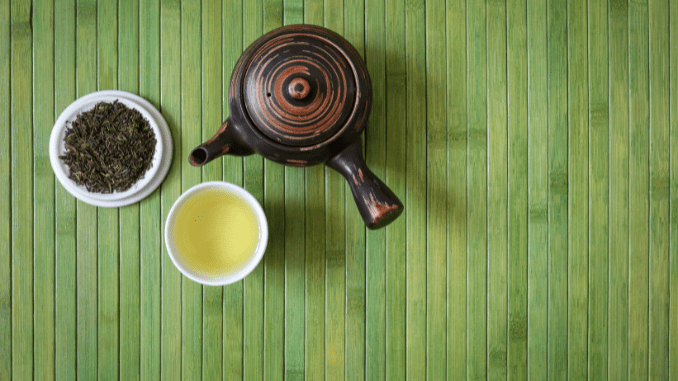Introduction
What comes to your mind when you think about green tea? Well, the first thing that comes to mind is that it’s refreshing, healthy, and aids in weight loss. But alongside these health benefits, the second thing that comes to mind is caffeine. This then raises a series of questions like should we drink green tea? and if so, how much? And which green tea has less caffeine?
Hence in this article, we are going to explore the world of green tea with caffeine and its different benefits and how to get a proper tea for your taste and for a good experience.
What is caffeine
Well, caffeine is the natural component of tea leaves hence there is no green tea in this world which is having no caffeine. For a detailed understanding of caffeine benefits and its side effects can visit one of my articles titled “Green tea caffeine: Benefits & Side Effects ”. Green tea is far better than black tea and coffee as it contains relatively less caffeine.
The process of production of green tea is different and they are not created equal in terms of caffeine content. Variations arise due to factors like tea type, processing and brewing methods.
Types of Green tea with less caffeine
1. Matcha green tea

Matcha or powdered green tea is a popular Japanese tea and is consumed worldwide because of its high antioxidant and energy-boosting abilities.
This green tea is a type of green tea made of powdered leaves traditionally used in Japan for ceremonial purposes. The main difference between green tea and matcha tea is that green tea is prepared by brewing the leaves in hot water but in matcha tea, the leaves are also consumed.
Production of this tea includes shading the tea plants for several weeks before harvesting. This boosts the chlorophyll content of the leaves which gives the matcha a distinctive green colour. After harvesting they are steamed, dried and ground into fine powder. Please read the article “Matcha Green Tea Health Benefits & Side Effects”.
2. Sencha tea
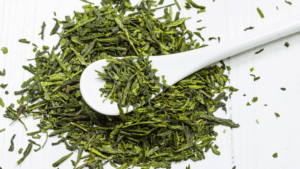
Another example of fine tea from Japan also known as roasted tea which is having moderate caffeine content. The main step involved in sencha tea preparation is harvesting the first flush leaves also known as sencha.

Then their tender leaves are quickly stemmed to trap the green colour and stop further oxidation. After the steaming process, these are further rolled to shape them into their characteristics needle-like form. Then dry to remove excess moisture.
3. Bancha Tea
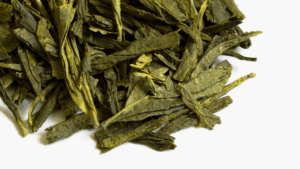
Bancha tea is another Japanese tea also known as common tea or coarse tea is a tea with low caffeine content. This tea is made from mature tea leaves and thus is lighter in both flavour and caffeine. The method of preparation of this tea is almost the same as above like the Sencha tea but instead of taking young leaves here mature leaves are harvested, steamed, rolled and dried.
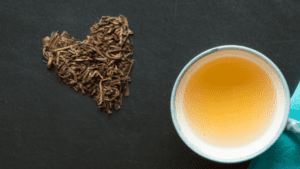
Bancha tea is good as they are rich in antioxidant, low in. caffeine and good for digestion and hydration of the body.
4. Hojicha tea
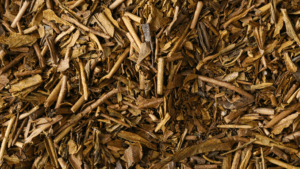
This Japanese tea is also known as roasted tea. Half the method of preparation is the same as the sencha tea but the defining step in this tea is roasting at a high temperature which gives this tea the characteristic reddish brown colour with a toasty and nutty caramelized flavour.
Therefore the steps for the preparation of this tea are
Harvesting generally low-grade leaves are selected that are coarse and larger in size. Steaming and rolling are done followed by harvesting thereafter the signature step of roasting at high temperature then cooling and packaging.
Again here the process of roasting reduces the caffeine content of the tea and thus is suitable for all ages.
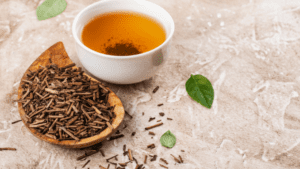
Hojicha tea is low in caffeine, good for digestion and rich in antioxidants.
5. Kukicha tea
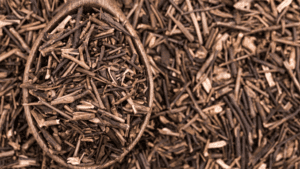
Also known as twig tea is a type of Japanese tea. It is also low in caffeine and has a slightly sweet taste.
The Kikucha is mainly prepared from stems, stalks and twigs that are often the byproducts of tea production.
The Kikucha production process involves the harvesting of the stalks, twigs and stems and then steaming to stop further oxidation followed by drying and then blending and packaging.
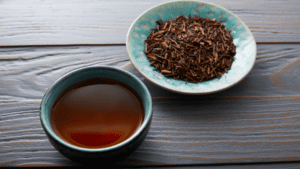
Just like the other teas, Kikucha is also good for digestion, low in caffeine and high in antioxidant content.
Brewing tips for low-caffeine green tea
By following simple steps you can enjoy a sip of green tea with less caffeine content. These are
1. Temperature of the water
High temperature extracts more caffeine from the tea hence to avoid over-extraction of caffeine try to keep the temperature of the water below 175 °F or 80 °C.
2. Steeping time
By reducing the steeping time you can easily reduce the over-extraction of caffeine into your tea. Keep the steeping time usually under 1-2 mins.
Besides these always opt for high-quality tea to extract or enjoy the best flavour. Try to adjust the steeping time and water temperature according to your taste and the aroma and flavour you need.
